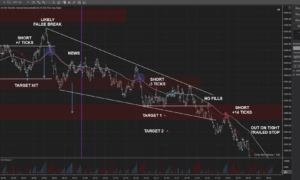According to the most recent analysis by Emergent Research, the size of the worldwide biometrics market reached USD 43.54 billion in 2021 and is projected to grow at a revenue CAGR of 14.8% over the forecast period. Between 2022 and 2030, the market is expected to experience revenue growth due to factors such as the growing need for security systems that are simple to use and more convenient authentication methods. Additionally, it is anticipated that the growing demand for high levels of security in the banking, finance, and defense sectors would continue to propel market revenue growth in the coming years.
The term “biometrics” refers to procedures used to verify, identify, and recognize people based on their physical or behavioral traits. They compare a person’s identification information to their biometric template that is already saved in the database. Physiological and behavioral traits are the two categories into which biometric IDs fall. In contrast to behavioral characteristics like typing patterns and voice and signature recognition, physiological characteristics include fingerprints, palm veins, palm prints, face, DNA, iris, and hand shape.
Some Key Highlights From the Report
- Due to the growing requirement to lower the risks connected with key logger activity, the multi-factor authentication category is anticipated to record a significantly rapid revenue CAGR during the projection period.
- Biometric devices, computers, and networks to which they are attached can all communicate and operate together thanks to biometric software. It also enables effective connection and makes it possible for diverse application applications on multiple operating systems to be interoperable. A crucial component of biometric systems is software. Software in signature verification systems, for instance, compares signatures and verifies their authenticity. It can be challenging for the human eye to effectively detect fraudulent signatures since human operators may not always be able to tell when a signature is false. As a result, signature verification software is being used more frequently since it reduces the likelihood of fraud, saves time, and guards against human error during the signing process.
- Fujitsu Limited, NEC Corporation, Thales SA, Assa Abloy AB, IDEMIA Identity and Security France SAS, M2SYS, Inc., DERMALOG Identification Systems GmbH, Aware, Inc., SecuGen Corporation, and BIO-Key International, Inc. are a few of the leading companies included in the market study.
Emergen Research has segmented the global biometrics market based on authentication type, component, functionality, technology, application, end-user, and region:
- Authentication Type Outlook (Revenue, USD Billion; 2019–2030)
- Single-Factor Authentication
- Multi-Factor Authentication
- Component Outlook (Revenue, USD Billion; 2019–2030)
- Hardware
- Software
- Functionality Outlook (Revenue, USD Billion; 2019–2030)
- Contact Based
- Non-Contact Based
- Combined
- Technology Outlook (Revenue, USD Billion; 2019–2030)
- Face Recognition
- Voice Recognition
- Signature Recognition
- IRIS Recognition
- Fingerprint Recognition
- Hand Geometry Recognition
- Others
- Application Outlook (Revenue, USD Billion; 2019–2030)
- Site Access Control
- Time Recording
- Mobile Application
- Workplace
- Others
- End-use Outlook (Revenue, USD Billion; 2019–2030)
- Banking, Financial Services, and Insurance (BFSI)
- Government and Defense Services
- Consumer Electronics
- Healthcare
- Commercial Safety and Security
- Transport/Logistics
- Retail and E-commerce
- IT and Telecommunication
- Others
- Regional Outlook (Revenue, USD Billion; 2019–2030)
- North America
- the U.S.
- Canada
- Mexico
- Europe
- Germany
- France
- the U.K.
- Italy
- Spain
- Benelux
- Rest of Europe
- the Asia Pacific
- China
- India
- Japan
- South Korea
- Rest of APAC
- Latin America
- Brazil
- Rest of LATAM
- Middle East & Africa
- Saudi Arabia
- UAE
- South Africa
- Turkey
- Rest of MEA
- North America
To get leading market solutions, Visit the Link Below



































